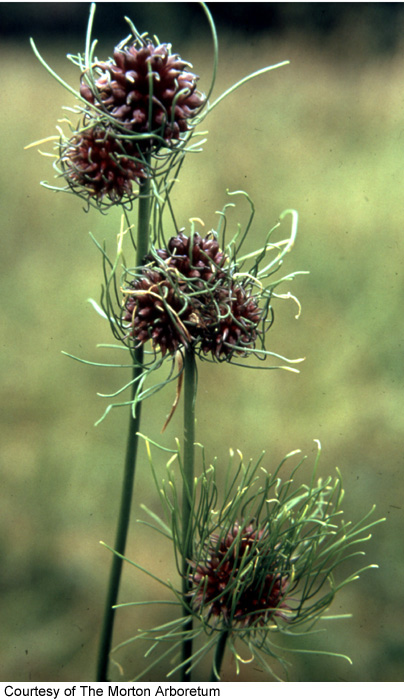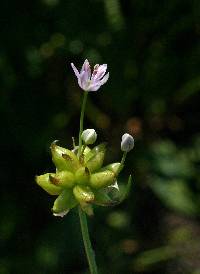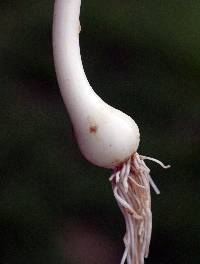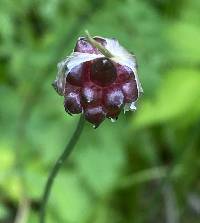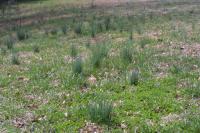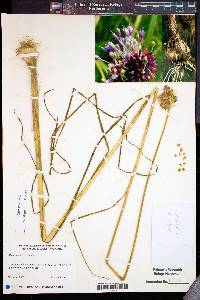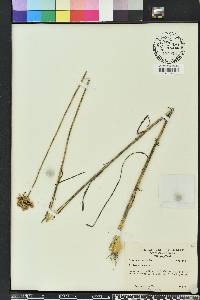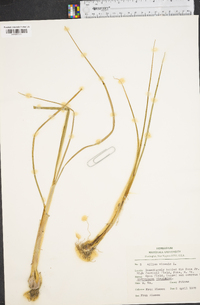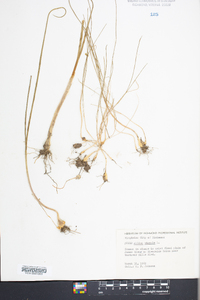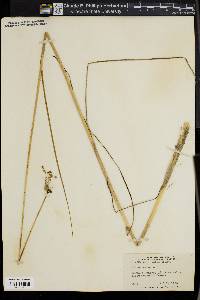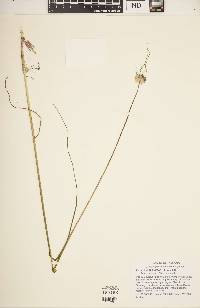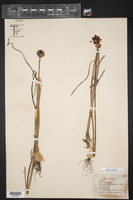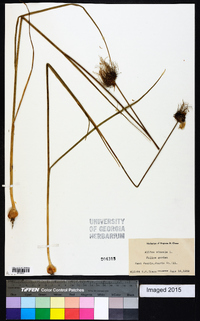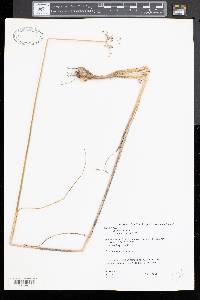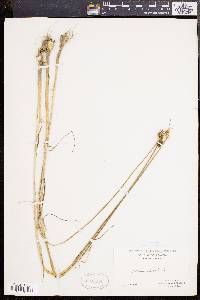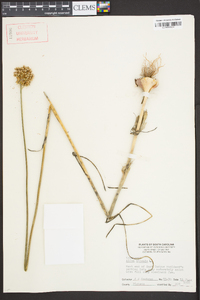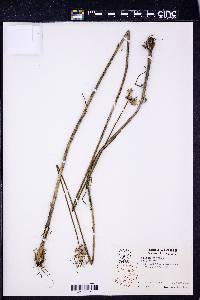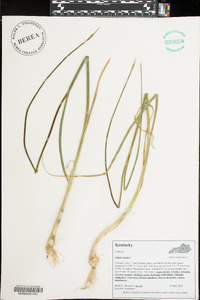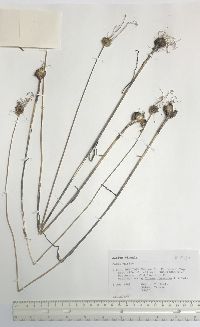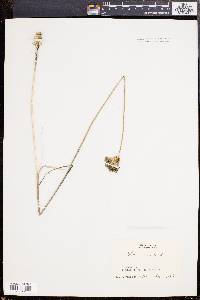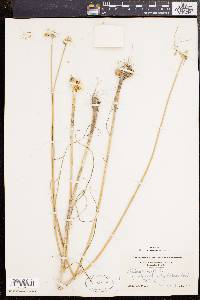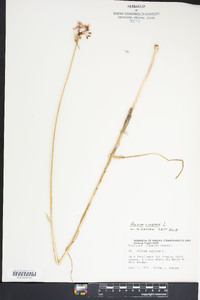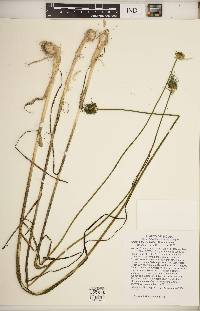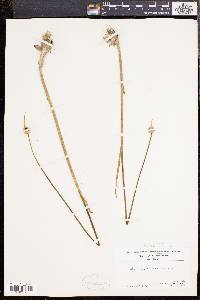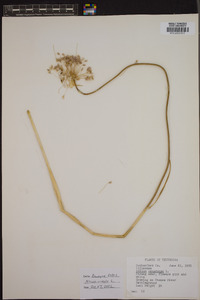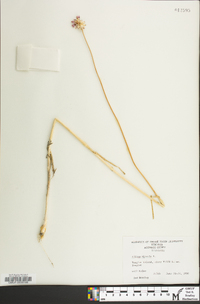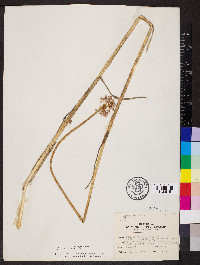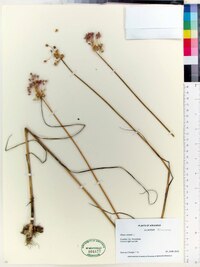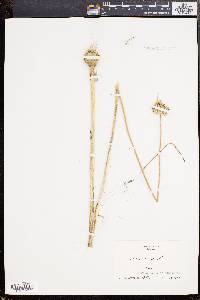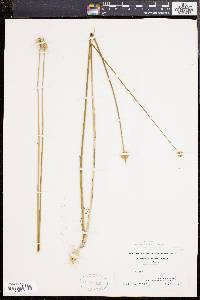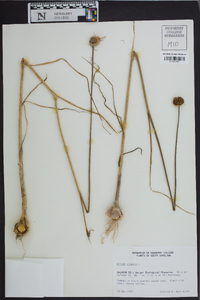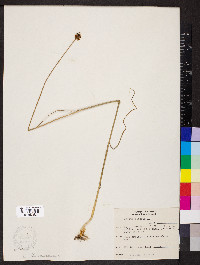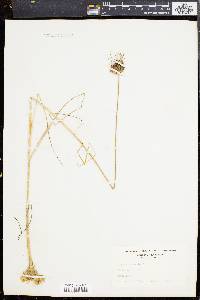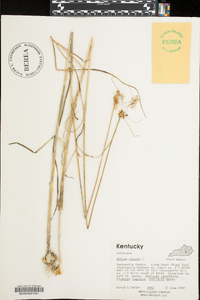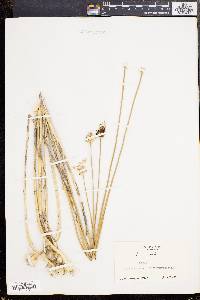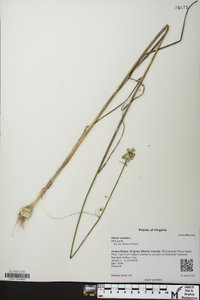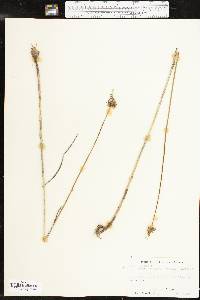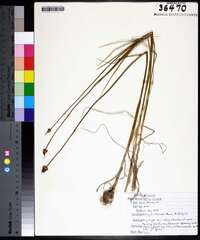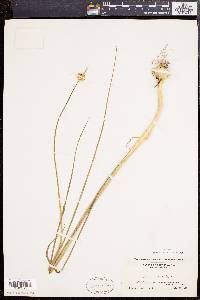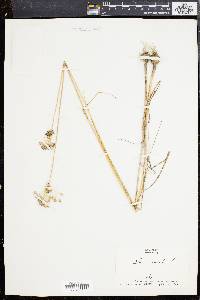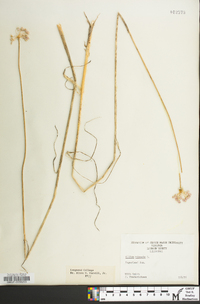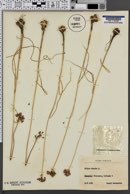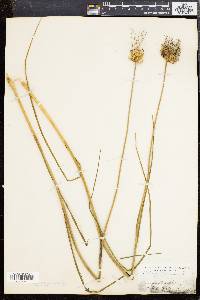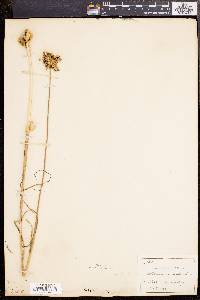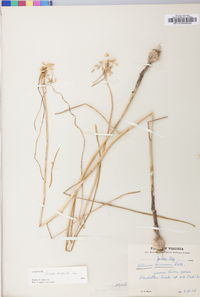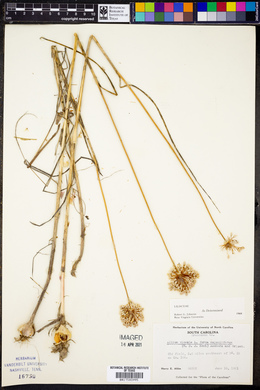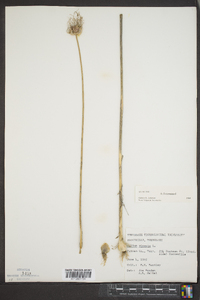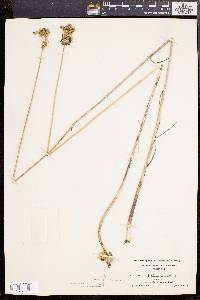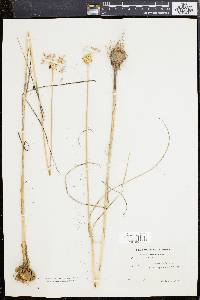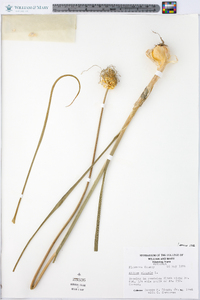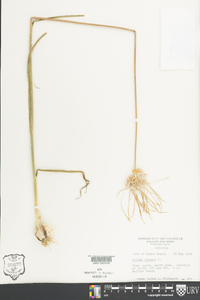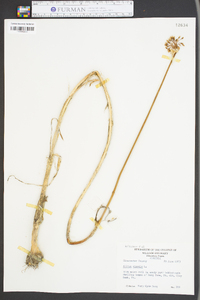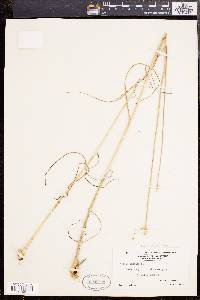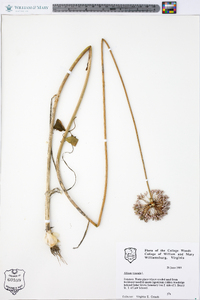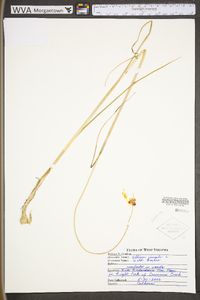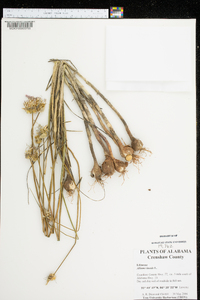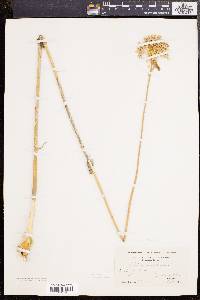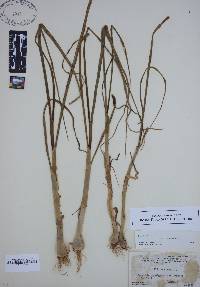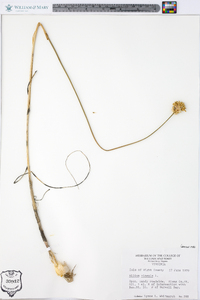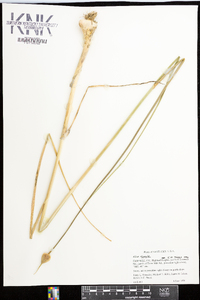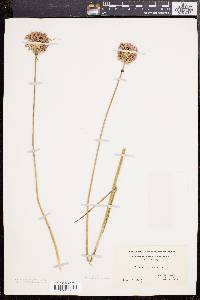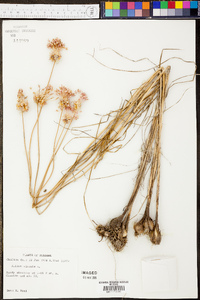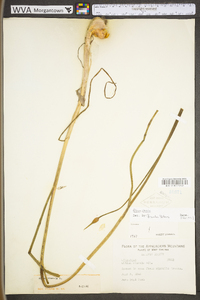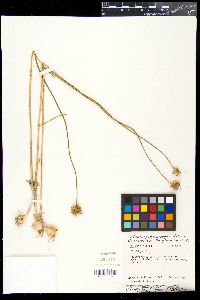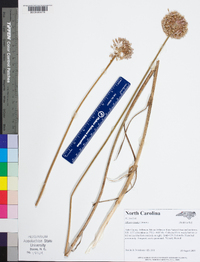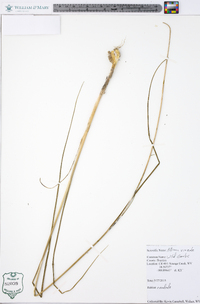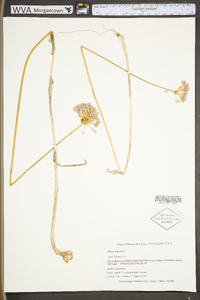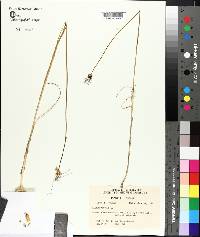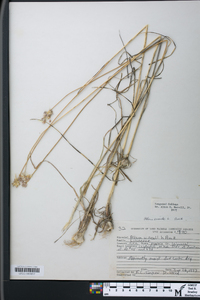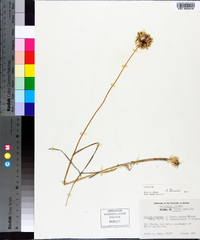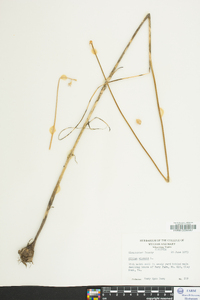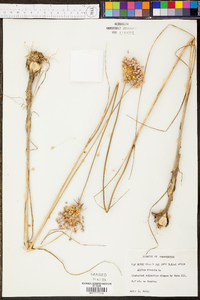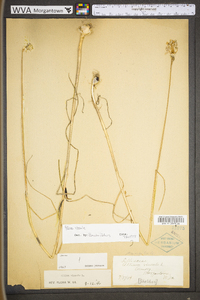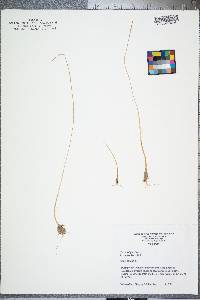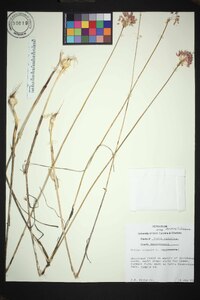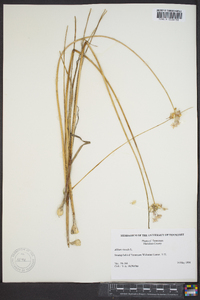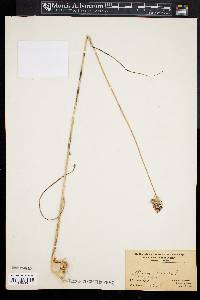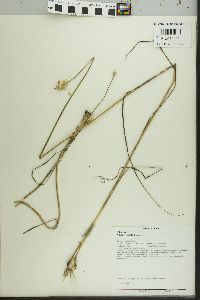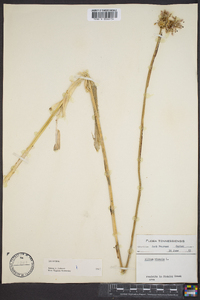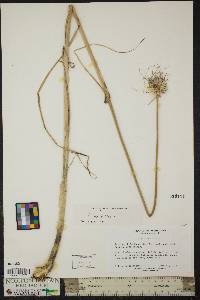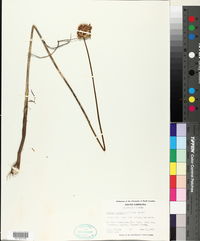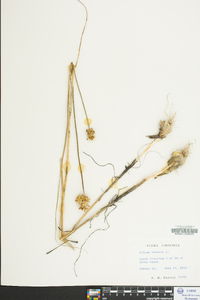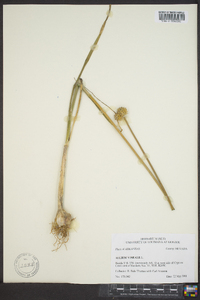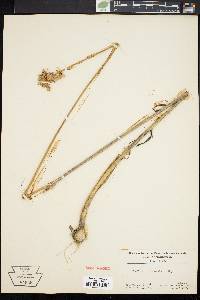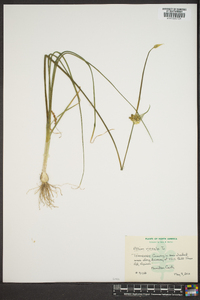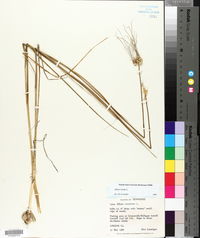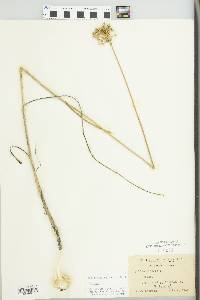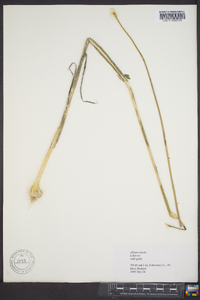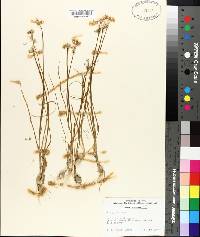Allium vineale
|
|
|
|
Family: Amaryllidaceae
Crow Garlic, more...Wild Garlic
[Allium campestre Schleich. ex Steud., moreAllium compactum Thuill., Allium vineale f. compactum (Thuill.) Bolzon, Allium vineale var. capsuliferum W.D.J.Koch] |
Bulbs 5-20, clustered, stipitate, hard-shelled, asymmetric, ovoid, 1-2 × 1-2 cm; outer coats enclosing bulbs, brownish to yellowish, membranous, vertically striate, splitting into parallel strips and fibers, cells arranged in ± wavy rows, vertical; inner coats white to light brown, cells obscure, vertically elongate. Leaves persistent, green at anthesis, 2-4, sheathing at least proximal 1/2 scape; blade hollow below middle, terete, cylindric or filiform, not carinate, 20-60 cm × 2-4 mm, margins entire. Scape persistent, solitary, erect, terete, 30-120 cm × 1.5-4 mm. Umbel persistent, erect, ± compact, 0-50-flowered, subglobose to ovoid or hemispheric, flowering pedicels all or in part replaced by bulbils; bulbils sessile, basally narrowed, 4-6 × 2-3 mm; spathe bract caducous, 1, 2-several-veined, ovate, apex caudate, beaked, beak ± equaling or longer than base. Flowers campanulate, 3-4 mm; tepals erect, greenish to purple, elliptic-lanceolate, ± equal, withering in fruit, margins entire, apex obtuse; stamens exserted, outer 3 filaments without appendages, inner 3 filaments with 2 prominent lateral appendages; anthers purple; pollen white; ovary crestless; style exserted, linear, ± equaling stamen; stigma capitate, scarcely thickened, unlobed; flowering pedicel 10-20 mm. Seed coat shining; cells smooth. 2n = 32, 40. Flowering Jun--Aug. Disturbed areas often adjacent to agricultural lands; 0--700 m; introduced; Ont., Que.; Ala., Ark., Calif., Conn., Del., D.C., Ga., Ill., Ind. Iowa, Kans., Ky., La., Maine, Md., Mass., Mich., Miss., Mo., N.J., N.Y., N.C., Ohio, Okla., Pa., R.I., S.C., Tenn., Va., W.Va.; Europe. Allium vineale is also expected to be found in Wisconsin and Texas; specimens were not seen. It is a noxious weed, apparently introduced from Europe in colonial times. The small, wheat-sized bulbils frequently contaminated wheat grown in infested areas. Bread made from such wheat was garlic-flavored, and cows grazing in infested pastures produce garlic-flavored milk.
Perennial herb with five to twenty bulbs flowering stem 30 cm - 1 m tall Leaves: two to four, extending to nearly the middle of stem, slender, 20 cm - 0.6 m long, 2 - 4 mm wide, cylindrical, hollow below the middle. Inflorescence: an upright, round to dome-shaped umbel of zero to fifty flowers raised on a single stalk and subtended by a short, beaked bract. Flowers often growing with or replaced by small, stalkless, egg-shaped bulblets. Flowers: on 1 - 2 cm long stalks, reddish purple to pink, sometimes greenish or white, 3 - 4 mm long, bell-shaped, with six pointed tepals that wither in fruit. Stamens six, exserted. Anthers purple. Fruit: a short, three-lobed capsule. Bulbs: clustered, up to 2 cm tall, round to egg-shaped, and encased in a brownish or yellowish membranous coating. Bulbs with a strong garlic odor. Similar species: The cylindrical, hollow leaves and non-inflated stems of this species and Allium schoenoprasum help distinguish them from other Allium found in the Chicago Region. Allium schoenoprasum differs from A. vineale by having leaves that are mostly basal and an umbel that does not produce bulblets. Flowering: May to August Habitat and ecology: Introduced from Europe. A weed of cultivated fields, meadows, pastures, and turf. It also occurs in nursery plots and along railroads. Occurence in the Chicago region: non-native Etymology: Allium comes from the Latin word for garlic. Vineale means vine-like. Author: The Morton Arboretum Bulb round-ovoid, 1-2 cm; stem slender, 3-10 dm; lvs cauline, few-several, nearly terete except at the base, very slender, mostly 1-2 dm, hollow at least below; umbel erect, subtended by a short invol, often producing only bulblets, these ovoid, usually tipped by a long, fragile, rudimentary lf; normal fls on pedicels 1-2 cm, red-purple or pink, sometimes white or greenish; tep acute or acutish; inner stamens with broad flat filaments, ending in 2 exsert hair-like appendages exceeding the anther; 2n=16, 32, 40. Native of Europe, established as a noxious weed of lawns, fields, and meadows in our range. June. Gleason, Henry A. & Cronquist, Arthur J. 1991. Manual of vascular plants of northeastern United States and adjacent Canada. lxxv + 910 pp. ©The New York Botanical Garden. All rights reserved. Used by permission. From Flora of Indiana (1940) by Charles C. Deam My specimens are all from southern Indiana where it is one of the most pernicious of all weeds. A pioneer who lived in Point Township, Posey County, told me that when he was a boy (about 1860) both the garlic and wild onion were common in the woodland. Henry Hollingsworth (Trans. Amer. Phil. Soc. 1: 311- 313. 1789, ed. 2) writes that sowing wheat stubble to oats will practically eradicate it. This indicates that it has been a weed since early times. This species is found along roadsides and streams and in cultivated fields and pastures. It is difficult to eradicate because it propagates both by bulbs and bulblets. The principal objection to this species as well as to others of this genus is that milch cows can not be pastured where it grows because the garlic odor is transmitted to the milk. The task of ridding the soil of this and other species of this genus is a difficult one, especially if the area is subject to overflow because the bulblets are freely transported. Much literature has been published on the eradication of this species. Copies of this literature may be obtained gratis from the U. S. Department of Agriculture, Washington, D. C. and from the Purdue University Agricultural Experiment Station, West Lafayette, Indiana. ...... Indiana Coefficient of Conservatism: C = null, non-native Wetland Indicator Status: FACU Diagnostic Traits: Leaves linear (<5 mm wide), hollow; sheaths covering the lower 1/3 to 1/2 of the stem; umbels bearing bulblets. |
|
|
|

